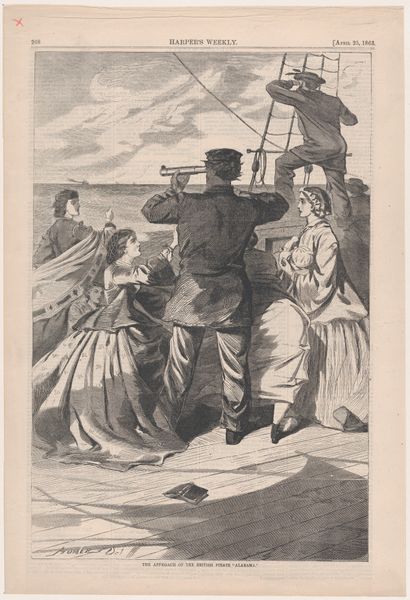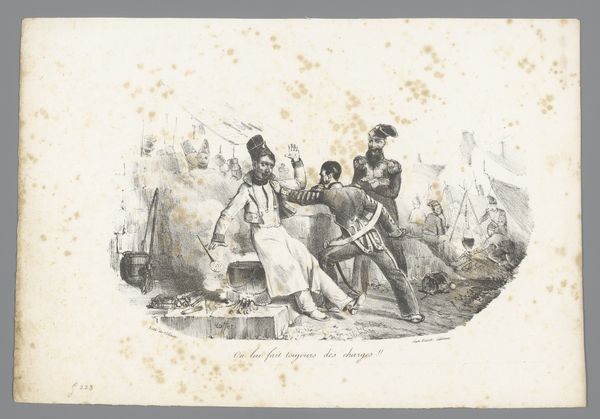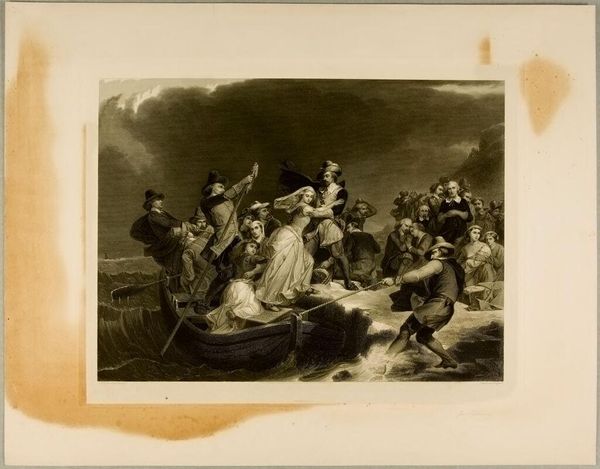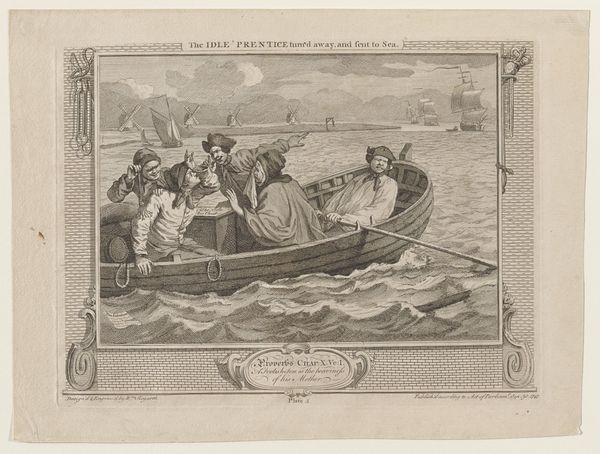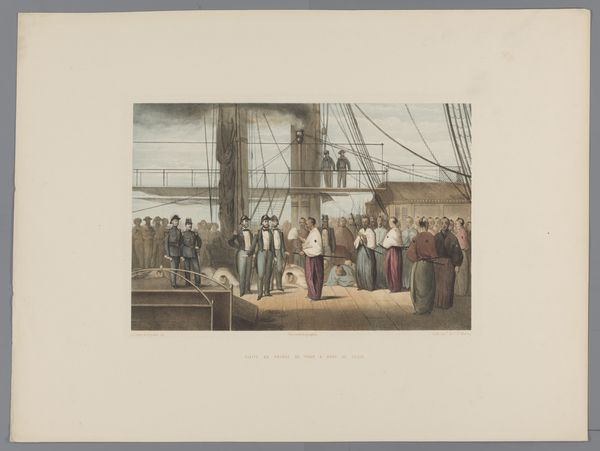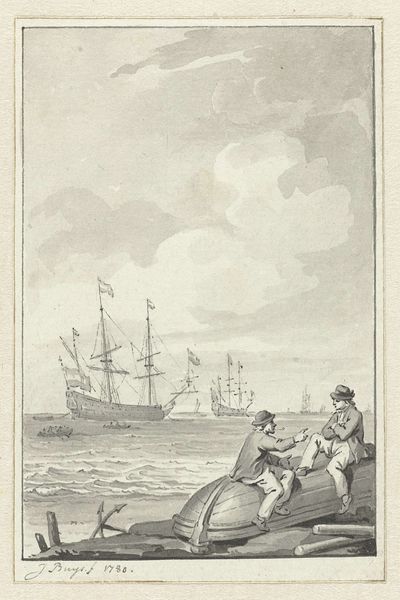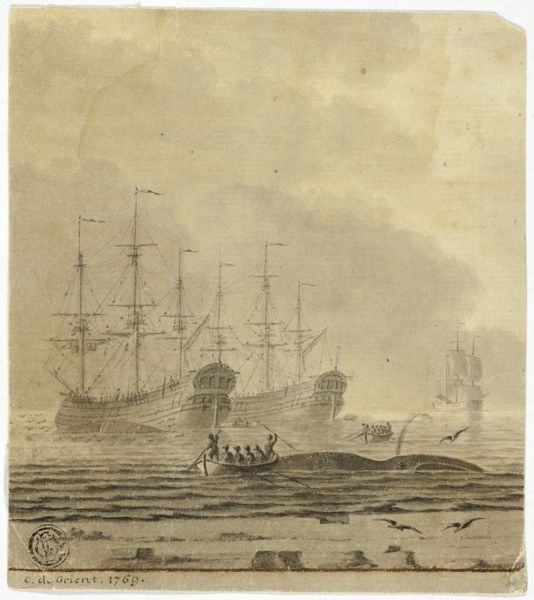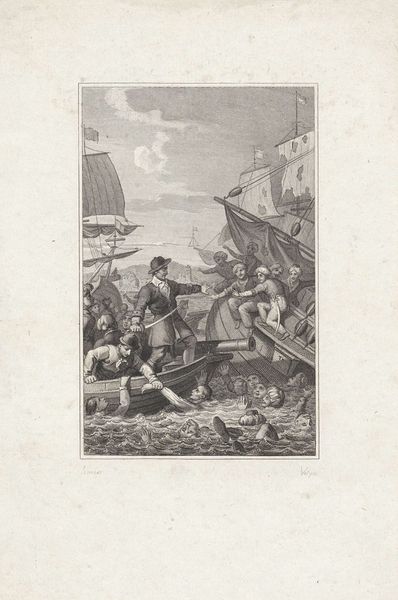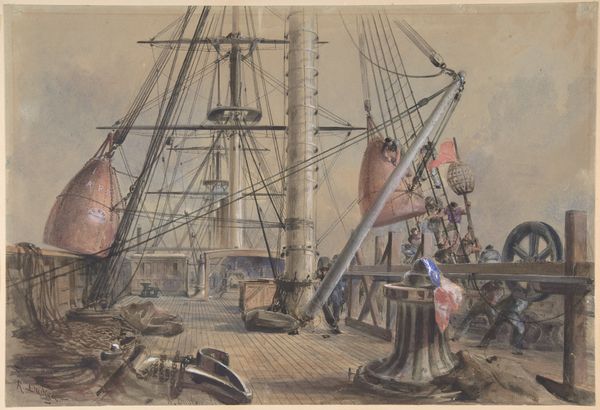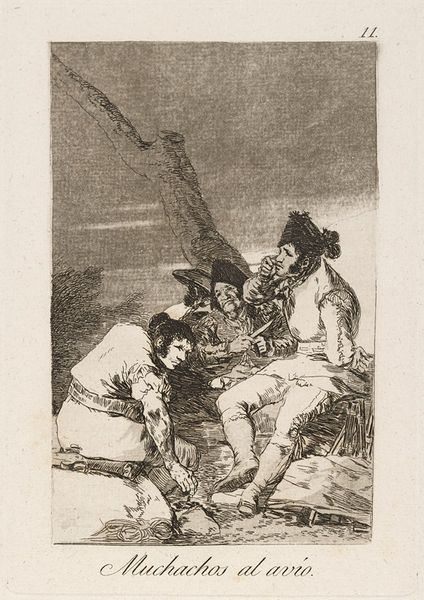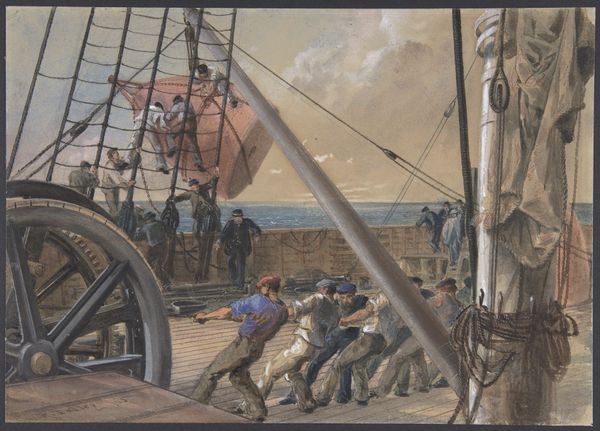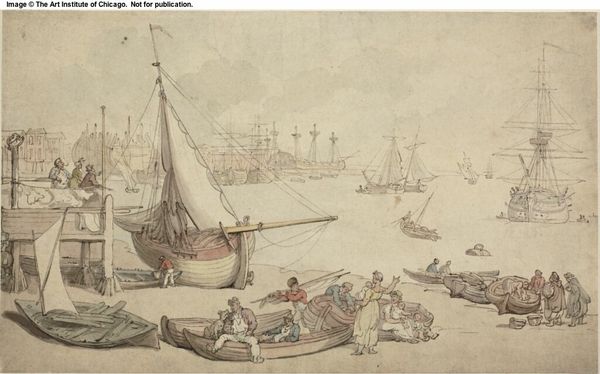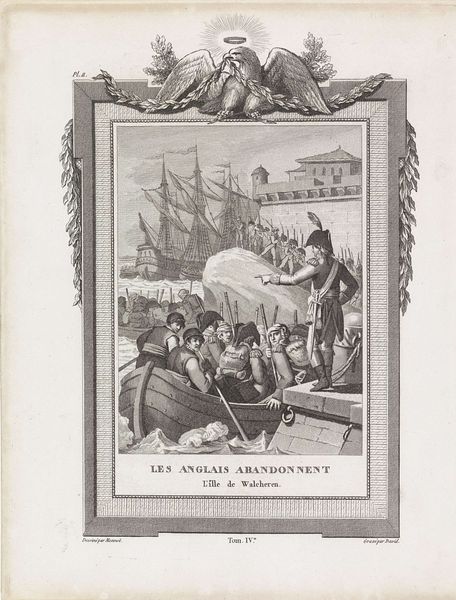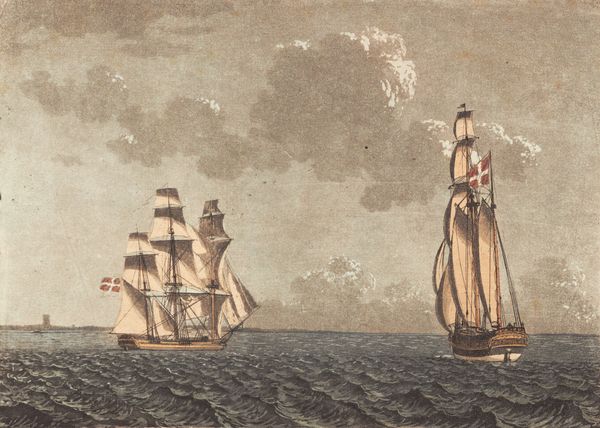
Zes personen op een strand met twee zeilschepen op de achtergrond 1852 - 1863
0:00
0:00
Dimensions: height 83 mm, width 173 mm
Copyright: Rijks Museum: Open Domain
Editor: This artwork is titled "Zes personen op een strand met twee zeilschepen op de achtergrond," which translates to "Six People on a Beach with Two Sailing Ships in the Background." It was made sometime between 1852 and 1863 by Rottmann & Co. Gebhardt using photography, watercolor, and colored pencil—what a mix! I'm immediately struck by the composition: this small group gathered on the shore gazing out at the ships. How would you interpret this work? Curator: From a materialist perspective, it's fascinating to consider the context of photographic production at this time. This is early photography, and the application of watercolor and colored pencil signals a desire to elevate the status of photography, aligning it with painting, a more established "high art" form. What kind of labor was involved in creating this? How accessible were these technologies, and who could afford the leisure time to be depicted here? Editor: That's a really interesting point! I hadn't thought about the labor involved beyond the artist. I suppose the subjects are also performing labor by posing? Or is their clothing important? Curator: Exactly. The clothing is a crucial element. What materials are being used, who is producing these textiles and with what labor? Also, consider what the act of capturing this scene on film means: who has access to cameras, who is being represented in this era, and whose stories remain untold or unseen due to limited material resources? Editor: So, the "who," "how," and "why" of its making are as crucial as the image itself? Curator: Precisely! Examining the materials and processes opens a dialogue about social context and power. Even the choice to depict ships raises questions about trade, colonialism, and the circulation of goods and people. Editor: I see the connection now. Focusing on the materiality and production adds layers of understanding I hadn’t considered. Curator: Thinking about these elements helps to move past the purely aesthetic to considering the social implications embedded in the work. It also allows us to see it with a completely different approach. Editor: Absolutely. I’ll definitely be more attentive to materials and means of production moving forward. Thanks for helping me consider a different view of the world of art.
Comments
No comments
Be the first to comment and join the conversation on the ultimate creative platform.
